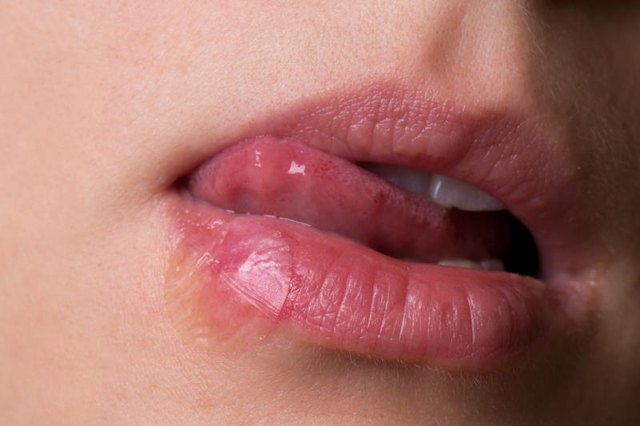can herpes be transferred through breast milk Mom and baby share “good bacteria” through breast milk
Oral herpes and genital herpes are two common types of herpes infections that affect millions of people worldwide. Although they are caused by the same virus, they differ in terms of location and symptoms. In this article, we will explore the stages of oral herpes and discuss the in-depth report on genital herpes. Please note that the information provided is for educational purposes only and should not replace professional medical advice.
Stages of Oral Herpes
 Oral herpes, also known as cold sores or fever blisters, is primarily caused by the herpes simplex virus type 1 (HSV-1). This infection can be transmitted through close contact with an infected individual, such as through kissing, sharing utensils, or oral sex.
Oral herpes, also known as cold sores or fever blisters, is primarily caused by the herpes simplex virus type 1 (HSV-1). This infection can be transmitted through close contact with an infected individual, such as through kissing, sharing utensils, or oral sex.
Once the virus enters the body, it remains dormant in the nerve cells until triggered by certain factors like stress, illness, or a weakened immune system. The stages of oral herpes include:
1. Primary Infection
During the initial infection, which usually occurs in childhood, the virus enters the body through a break in the skin or mucous membrane. This can result in flu-like symptoms, including fever, sore throat, swollen glands, and mouth ulcers. The blisters, filled with clear fluid, can appear on or around the lips, mouth, or nose and may be accompanied by pain or itching.
2. Latency Period
After the primary infection, the virus retreats to the nerve ganglia near the spine and remains dormant. During this latent phase, there are no visible symptoms, and the infected individual may not be aware of the virus’s presence.
3. Recurrent Outbreaks
Periodically, the virus can reactivate, leading to recurrent outbreaks. This usually happens when the immune system is weakened or compromised. The reactivated virus travels from the nerve ganglia back to the skin’s surface, causing the characteristic cold sores. These outbreaks are often preceded by tingling or burning sensations in the affected area. The blisters typically last for 7-10 days, gradually crusting over and healing.
 Genital Herpes - In-Depth Report
Genital Herpes - In-Depth Report
Genital herpes is primarily caused by the herpes simplex virus type 2 (HSV-2), although it can also be caused by HSV-1. This sexually transmitted infection is spread through vaginal, anal, or oral sex with an infected individual.
Similar to oral herpes, genital herpes follows a similar pattern of primary infection, latency period, and recurrent outbreaks:
1. Primary Infection
The initial outbreak of genital herpes is usually the most severe. It typically occurs within two weeks of exposure and is characterized by clusters of painful, fluid-filled blisters on the genitals, buttocks, or anus. This can be accompanied by flu-like symptoms such as fever, muscle aches, and swollen lymph nodes.
2. Latency Period
After the primary infection, the virus migrates and establishes itself in the nerve ganglia near the spine. It remains inactive during this period, with no noticeable symptoms.
3. Recurrent Outbreaks
Similar to oral herpes, genital herpes can cause recurrent outbreaks throughout an infected individual’s lifetime. These outbreaks are typically less severe and shorter in duration compared to the initial outbreak. However, they can still cause discomfort and emotional distress. The frequency of outbreaks varies from person to person, with some experiencing them rarely or never.
If you suspect that you have oral or genital herpes, it is essential to seek medical advice for proper diagnosis and management. Antiviral medications can help reduce the severity and frequency of outbreaks and may be prescribed by your healthcare provider.
Remember, practicing safe sex and maintaining good personal hygiene can help prevent the spread of herpes to sexual partners. Communication and honesty are crucial when discussing your sexual health with a partner to make informed decisions together.
In conclusion, understanding the stages of oral herpes and being aware of the in-depth report on genital herpes can empower individuals to take charge of their health and make informed decisions. While herpes infections can be managed, it is important to seek healthcare professionals’ guidance for proper diagnosis and treatment.
If you are looking for Vaccinated Mothers Are Trying to Give Babies Antibodies via Breast Milk you’ve visit to the right place. We have 5 Pics about Vaccinated Mothers Are Trying to Give Babies Antibodies via Breast Milk like Mom and baby share “good bacteria” through breast milk, Stages of Oral Herpes | LIVESTRONG.COM and also Stages of Oral Herpes | LIVESTRONG.COM. Here you go:
Vaccinated Mothers Are Trying To Give Babies Antibodies Via Breast Milk
 www.nytimes.comvaccinated antibodies sinai
www.nytimes.comvaccinated antibodies sinai
Stages Of Oral Herpes | LIVESTRONG.COM
 livestrong.comherpes oral stages lip treatment livestrong overview woman
livestrong.comherpes oral stages lip treatment livestrong overview woman
Mom And Baby Share “good Bacteria” Through Breast Milk
 news.ubc.cababy bacteria milk mom breastfeeding infant mother breast through good unsplash liang kevin possibly transferred shared study found her
news.ubc.cababy bacteria milk mom breastfeeding infant mother breast through good unsplash liang kevin possibly transferred shared study found her
Mom And Baby Share “good Bacteria” Through Breast Milk
 www.med.ubc.cabacteria turvey
www.med.ubc.cabacteria turvey
Genital Herpes - In-Depth Report - NY Times Health
 health.nytimes.comherpes genital neonatal sore cold health area sores report look congenital does blisters blister sex std outbreak infection woman depth
health.nytimes.comherpes genital neonatal sore cold health area sores report look congenital does blisters blister sex std outbreak infection woman depth
Vaccinated mothers are trying to give babies antibodies via breast milk. Bacteria turvey. Mom and baby share “good bacteria” through breast milk